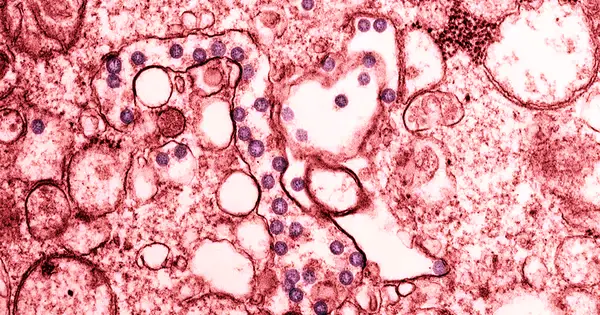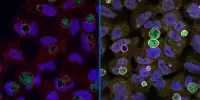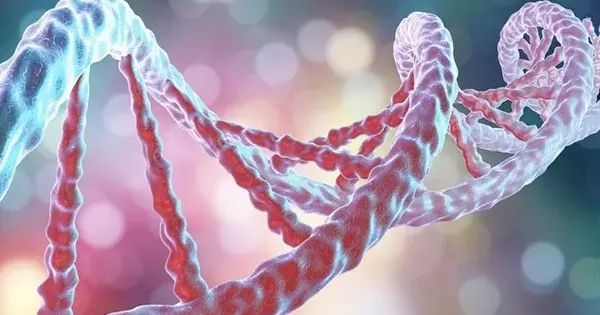A genetic mutation that confers resistance to cassava mosaic disease has been discovered in new research (CMD). A genetic mutation that confers resistance to cassava mosaic disease has been identified by Rebecca Bart, PhD, associate member, and Nigel Taylor, PhD, associate member and Dorothy King distinguished investigator, Donald Danforth Plant Science Center, and their collaborators at ETH Zurich, University of California Los Angeles, and the National Crops Resources Research Institute (NaCRRI) in Uganda (CMD).
Their findings have important implications for increasing cassava yield and sustaining farmer income in the face of a widespread disease, and they may also shed light on disease resistance in other major crops.
Cassava, a starchy root crop high in carbohydrates, is one of the world’s most important staple foods, feeding nearly one billion people, primarily in the tropics. Because of its drought tolerance and ability to grow in poor soils, cassava is considered a staple in many developing countries, particularly among smallholder farmers. Farmers in Africa, India, and Southeast Asia, however, some of the world’s largest cassava producing regions, frequently suffer massive yield losses due to CMD. Plants infected with CMD are stunted and do not fully develop the storage roots used for food.
Cassava remains mysterious in many ways, compared to corn or soybean, where hundreds of research labs have been working on these crops for decades. This discovery could provide disease-resistance strategies in those crops, too.
Nigel Taylor
Cassava mosaic disease is caused by a group of viruses that are all related. The virus hijacks cassava’s DNA replication system, impairing development and, as a result, yields. “Breeding better, CMD-resistant cassava varieties have significant implications for smallholder farmers’ livelihoods,” Taylor explains. CMD-resistant cassava varieties exist and were likely discovered and selected by farmers many decades ago. Many of these varieties are still widely grown and used as sources of resistance by breeders to create new, improved cassava varieties.
“Cassava remains mysterious in many ways,” says Taylor, “compared to corn or soybean, where hundreds of research labs have been working on these crops for decades.” Several years ago, Taylor’s team unexpectedly discovered plants in the field that had lost resistance to CMD, thus triggering the present investigation into the genetic basis for resilience to the virus. “If CMD-resistance hadn’t mysteriously been lost,” describes Bart, “we may never have gone after this project.”
The researchers realized right away that they had discovered something significant. The Danforth team began experiments to discover the genetic basis for CMD resistance with initial funding from the Danforth Center’s Institute for International Crop Improvement. The collaboration expanded to include partners from NaCRRI, UCLA, and ETH-Zurich, and it was funded in part by the Bill & Melinda Gates Foundation.

Their work sheds light on how resistance was acquired and how to maintain resistance in the future by identifying the exact genetic region that confers CMD-resistance – down to a single nucleotide. Moreover, similar viruses “attack many other crops, including cotton and tomato,” according to Bart.
“This discovery could provide disease-resistance strategies in those crops, too.” Studying cassava in the field is crucial to the researchers’ discoveries. For two years, the NaCRRI team grew cassava and documented disease prevalence in the field in Uganda — a recognized “hotspot” for CMD. The Danforth Center and NaCRRI, which is based near Kampala, have built a longstanding relationship, allowing levels of collaboration and resource-sharing between institutions.
These new findings were the result of a global collaboration of researchers, including Danforth Center Post-doctoral Associate and co-first author Dr. Ben Mansfeld, Research Associate Kerrigan Gilbert, and other key co-authors. “The other collaborators,” Taylor continues, “were the farmers in Africa who identified CMD-resistant plants and kept them alive for generations.” We have now identified the gene responsible for the resistance.”
The discovery of a single mutation that confers resistance to CMD has raised new questions and opportunities. “First and foremost,” says Bart, “we need to understand the mechanism by which the mutation confers resistance.” Understanding the mechanism of resistance will most likely shed light on how stable the resistance will be over time. “There’s a lot more to learn,” Taylor concludes. “How many other cassava secrets have we yet to discover?” The research team will continue their collaborative and global cassava studies, highlighting the importance of focusing research on lesser-known crops.
















